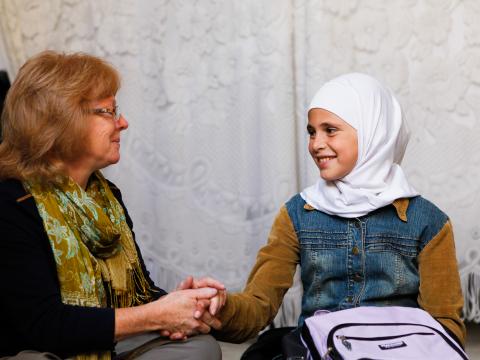Why you should contribute to closing the gender gap

By Conny Lenneberg, Regional Leader for the Middle East and Eastern Europe Regional Office, World Vision International
As we celebrate universal children’s day, there is both much to celebrate around progress for boys and girls, but there are also still major challenges in ensuring that children everywhere, both girls and boys, realize life in all its fullness. A few months ago, the death of a toddler on a Turkish tourist resort beach, forced a realization of the immense suffering of children caught in conflict on people all around the world. The tragedy of a little life lost and the tragedy of a father who lost both of his sons and his wife, underscored the desperate search for safety that families embark on when they lose hope for peace in their homelands. Over 12,000 children have lost their lives in the Syrian conflict, and as it approaches its fifth year, it feels hollow to speak of no lost generation, when as an international community we have failed to resolve this crisis and provide sufficient resources to care for displaced children and their families.
Another enduring challenge in meeting our child rights obligations, is the continuing discrimination and violence that girls face across the world. Even in transitioning economies in this region we find that son preference drives a scale of sex selective abortions which proportionally is similar to the world’s better known cases of India and China. From not being allowed to draw a first breath, girls experience a range of discriminations throughout their childhoods, which are uniquely the result of gender based attitudes and policies. Early marriage, lack of access to education, gender based violence and female genital mutilation, are all issues in addition to sex selective abortions, which World Vision addresses in its programs. It is essential that we are never gender blind or gender neutral in our assessment, design and implementation of programmes, because the world most certainly is not. If children are to enjoy the rights outlined in the Conventional of the Rights of the Child, then we need to be clear-eyed about the many obstacles that hinder girls from enjoying equal rights with boys.
The gender equity goals for children were among the least successful of all the millennium development goals. This highlights how difficult it is to change deep seated attitudes and practices rooted in gender attitudes in society. The SGDs have again made a robust commitment to gender equality and empowerment, but unless we bring a profound commitment to challenge gender based violence and discrimination in all its forms, vigilantly, they too will fail.
How can we, as individuals, nations and an international community contribute to closing the gender gap, transform traditional practices, attitudes and policies that prevent girls from enjoying the same rights as boys?
About the author
Conny Lenneberg is the Regional Leader for the Middle East and Eastern Europe Regional Office at World Vision International. Her role includes overseeing long-term development, humanitarian response and advocacy programs across 13 countries in Central Asia, Eastern Europe and the Middle East. Mrs Lenneberg has a special focus in issues of development effectiveness and building local sector capacity for continual improvement of NGO aid and development programs.